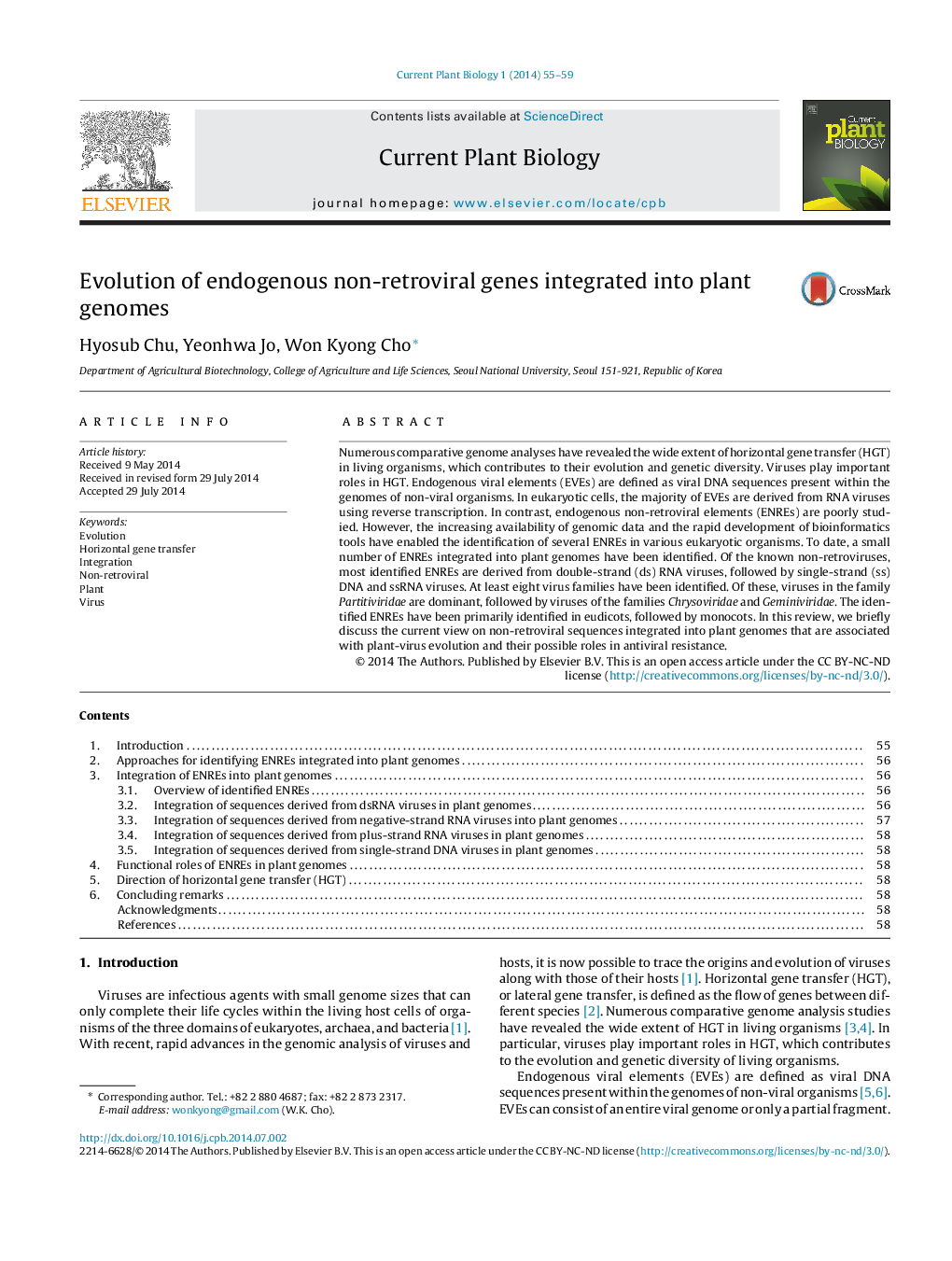| Article ID | Journal | Published Year | Pages | File Type |
|---|---|---|---|---|
| 571812 | Current Plant Biology | 2014 | 5 Pages |
Numerous comparative genome analyses have revealed the wide extent of horizontal gene transfer (HGT) in living organisms, which contributes to their evolution and genetic diversity. Viruses play important roles in HGT. Endogenous viral elements (EVEs) are defined as viral DNA sequences present within the genomes of non-viral organisms. In eukaryotic cells, the majority of EVEs are derived from RNA viruses using reverse transcription. In contrast, endogenous non-retroviral elements (ENREs) are poorly studied. However, the increasing availability of genomic data and the rapid development of bioinformatics tools have enabled the identification of several ENREs in various eukaryotic organisms. To date, a small number of ENREs integrated into plant genomes have been identified. Of the known non-retroviruses, most identified ENREs are derived from double-strand (ds) RNA viruses, followed by single-strand (ss) DNA and ssRNA viruses. At least eight virus families have been identified. Of these, viruses in the family Partitiviridae are dominant, followed by viruses of the families Chrysoviridae and Geminiviridae. The identified ENREs have been primarily identified in eudicots, followed by monocots. In this review, we briefly discuss the current view on non-retroviral sequences integrated into plant genomes that are associated with plant-virus evolution and their possible roles in antiviral resistance.
